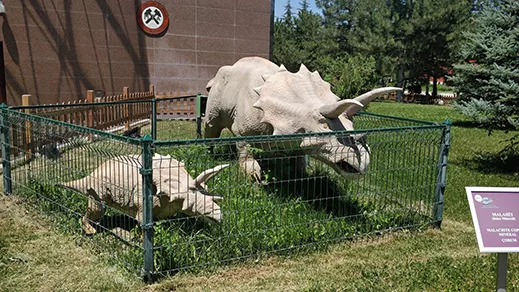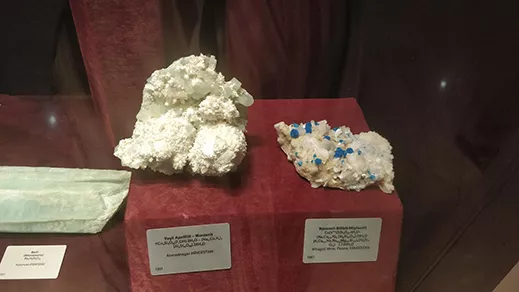MTA Sehit Cuma DAG Natural History Museum
As well as being a social event, the visit of museums allows “outdoor" learning through practical experiences for both children and adults. According to Griffin and Symington (1998), visitors can learn in museums through:
(a) taking responsibility for learning,
(b) active involvement in learning,
(c) purposeful manipulating of objects,
(d) making links between exhibits and ideas,
(e) sharing learning with peers and experts,
(f) showing confidence in learning by asking questions and explaining to peers, and
(g) responding to new information or evidence.
MTA Sehit Cuma DAG Natural History Museum is a remarkable natural history museums in Ankara. It is also the first and largest Natural History Museum in Turkey. Numerous fossils, rocks, minerals and mineral specimens compiled from various parts of Turkey and the world, describing natural history, are exhibited in the museum. The museum consists of three floors:
- The ground floor contains information, models and recreations about the planets within the Solar System, moonstone, lightning stone and thunderstones.
- On the first floor, there are fossils belonging to vertebrate and invertebrate animals and plant fossils, carnivorous dinosaurs from 140 million years ago, Marash Elephant and whale skeleton.
- The second floor contains minerals, ornamental stones and rock samples from various parts of Turkey and the world.
There is no entrance fee and no parking problem
Open:
Tuesday - Sunday




Address
Universiteler Mahallesi Dumlupinar Bulvari No:139 | Çukurambar Mahallesi, 06510, Ankara 06800, Türkiye
Website of the museum:
http://www.mta.gov.tr/v3.0/muze/anasayfa
REFERENCES
Griffin, J., & Symington, D. (1998). Thinking about learning strand 1: Visitor behaviour. Learning science in informal contexts, 7-15.




